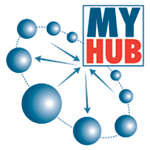
My
HUB Uses Security Features
to Protect Your Personal Information
When you log on to My HUB to view your personal information — such as your pay advice — a series of security features come together to protect this sensitive information. These physical, electronic, and procedural safeguards combine to ensure your privacy and peace of mind.
|
What
can I do to help keep my information private? |
|
|
While UPMC employs state-of-the-art technology to protect your information, you must take some responsibility for protecting your personal data:
|
|
Registration,
IDs, and passwords
The very first time you used My HUB, you were asked to complete a registration
process. To complete registration, you answered a series of questions
that confirmed your identity to the My HUB system. Then, you were issued
a unique username (E-Sign-On ID) and selected a personal password.
These two items act as keys that unlock the door to your information. In order to access your personal information, you must correctly enter your unique ID plus the password you selected. Someone who tries to access your information without knowing both your username and your password will be denied access. My HUB keeps track of these denied attempts to log on to its accounts. It recognizes three consecutive unsuccessful attempts to log on as a potential problem and will automatically lock down the account.
Firewalls,
encryption, and browsers
Like all UPMC computer servers, the servers that house My HUB employ firewalls
and standard encryption technologies to protect the data within them.
Firewalls protect internal networks, such as My HUB, that are connected
to the Internet against unauthorized access.
Secure Socket Layers (SSLs) encrypt, or convert into a secret code, the information that is transferred across the network from My HUB. Your Internet browser translates the encrypted information and then displays it for you to see. Most browsers can decode 40- or 128-bit SSL encryptions. The higher the number, the more complex the encryption. My HUB uses 128-bit encryption.
Browsers often cache, or temporarily store on your computer, the Web pages you view. This cache allows you to use the Back button feature of your browser. Caching will not reveal your username, password, or confidential information. These temporary files are automatically deleted from your computer when you sign out of My HUB. In addition, My HUB automatically terminates your session if there is no activity after 10 minutes.